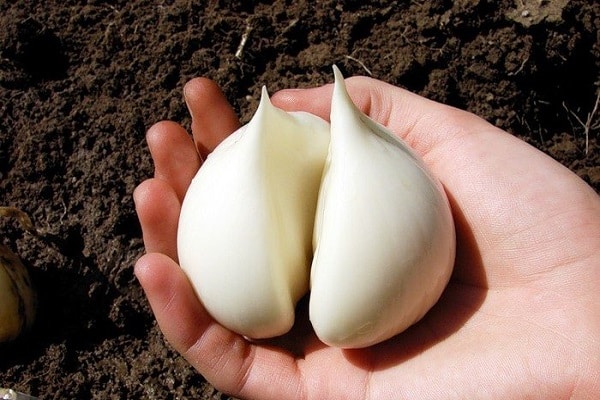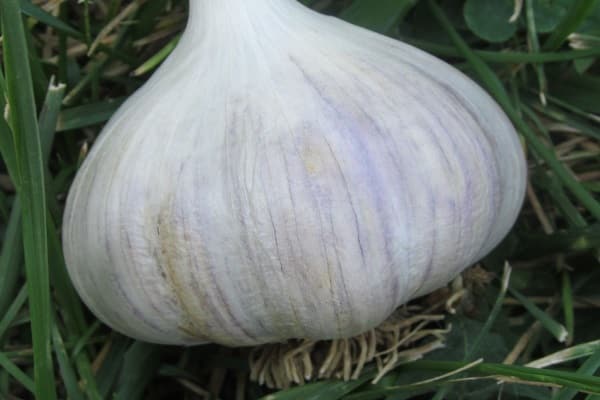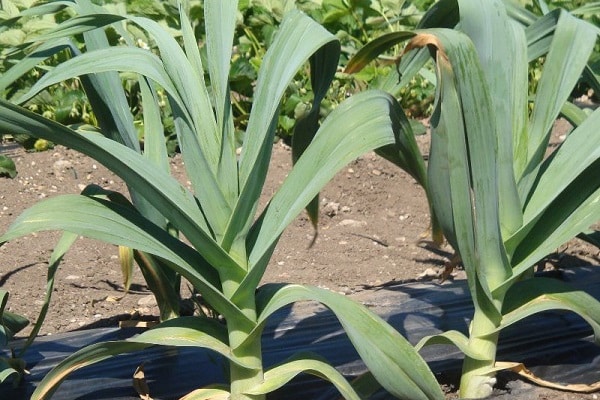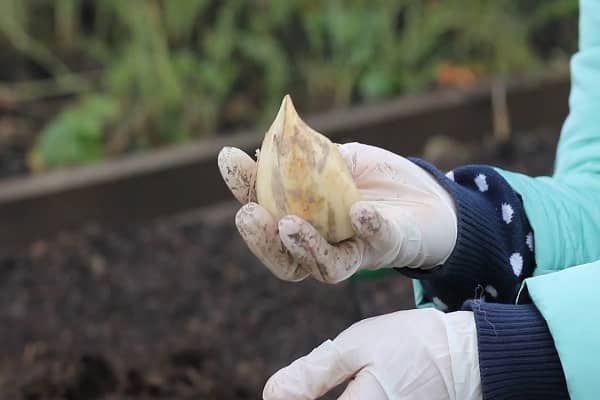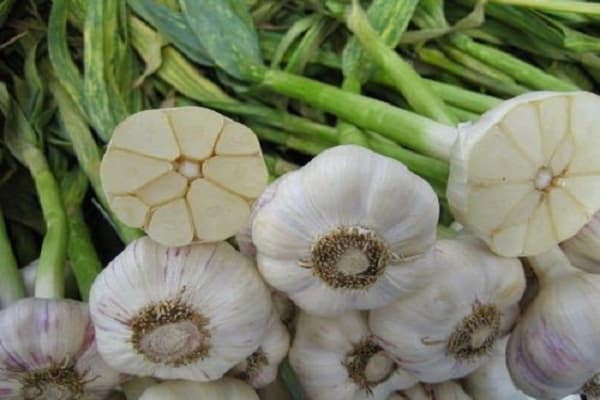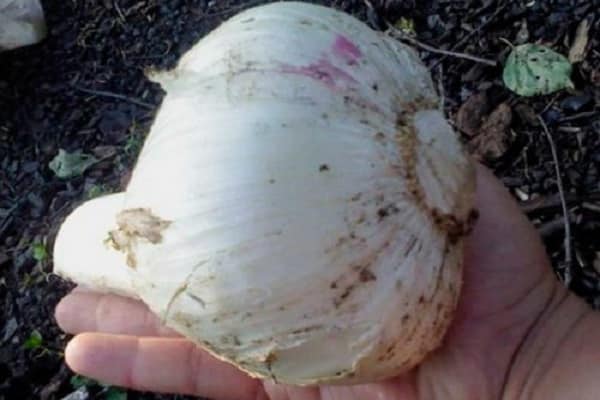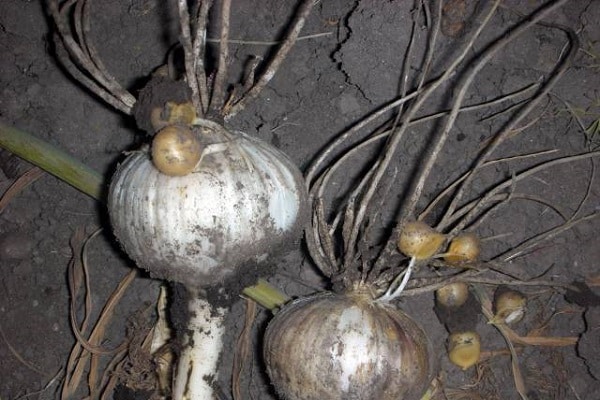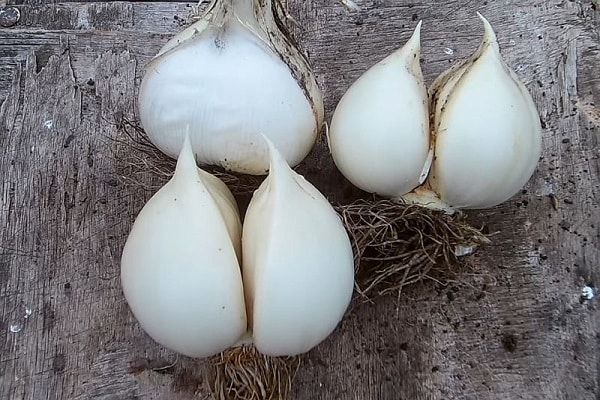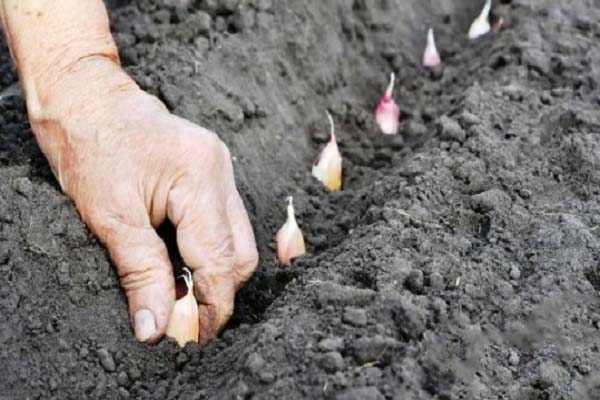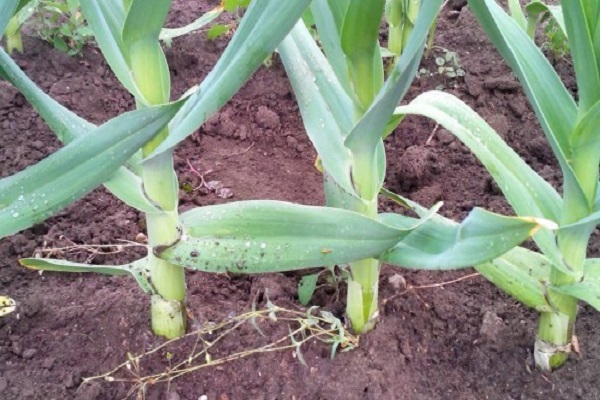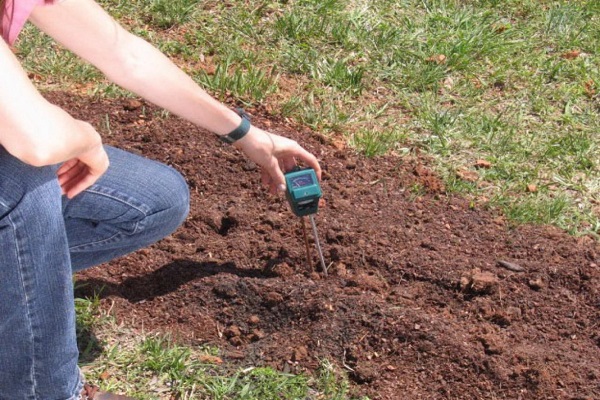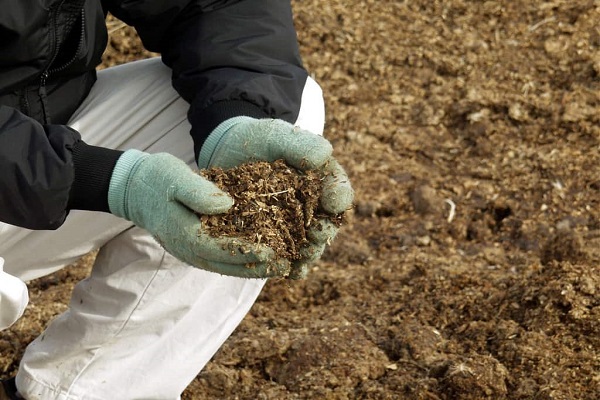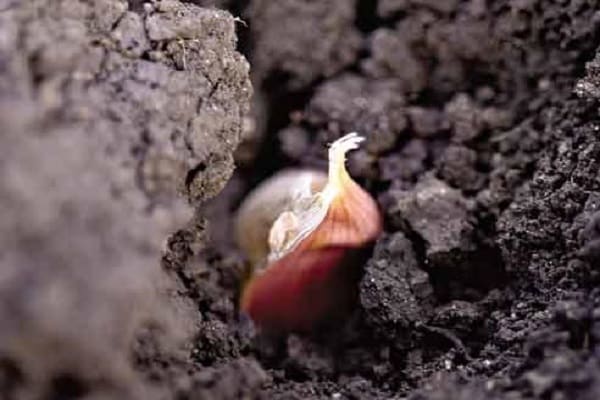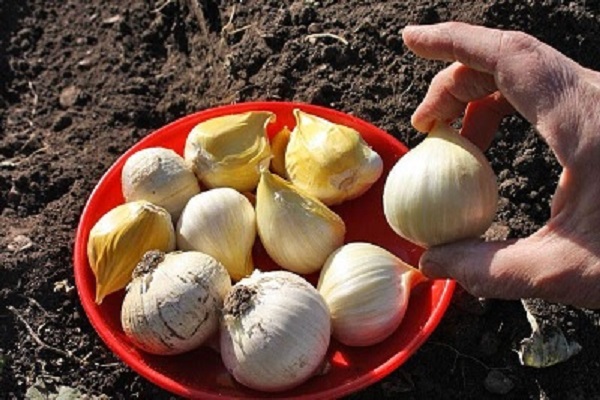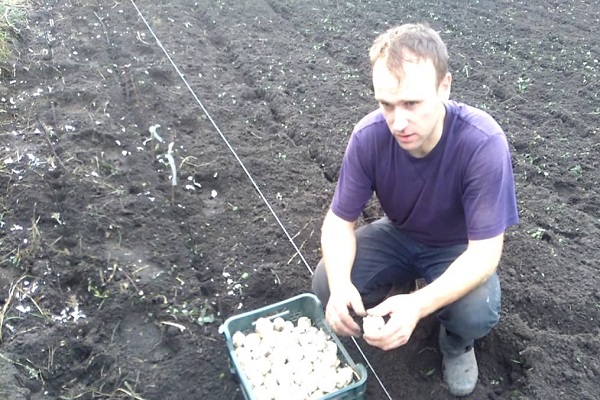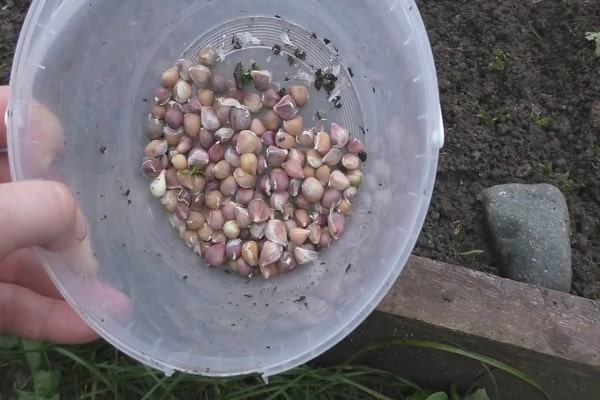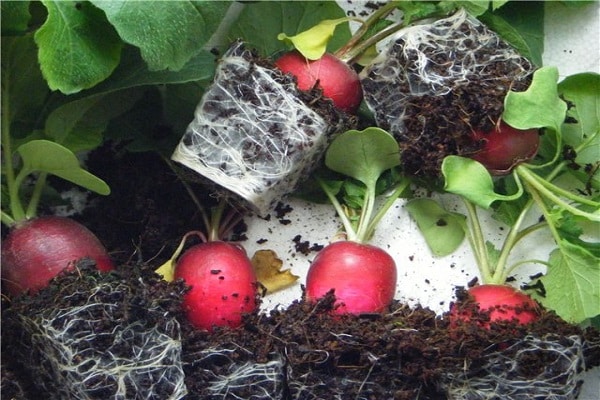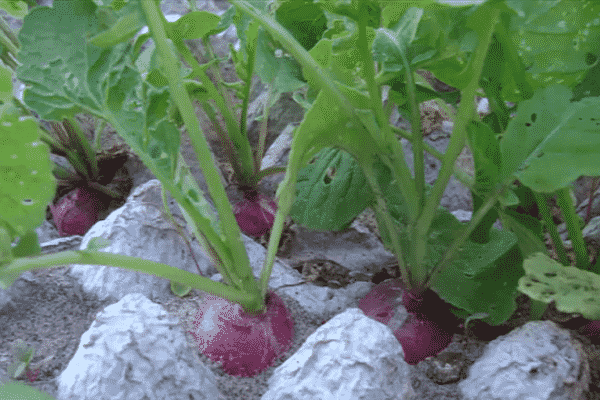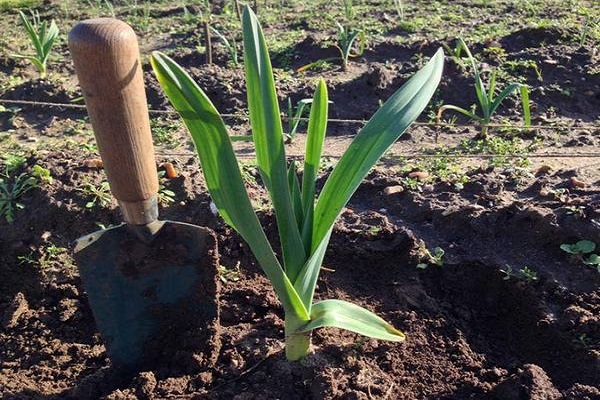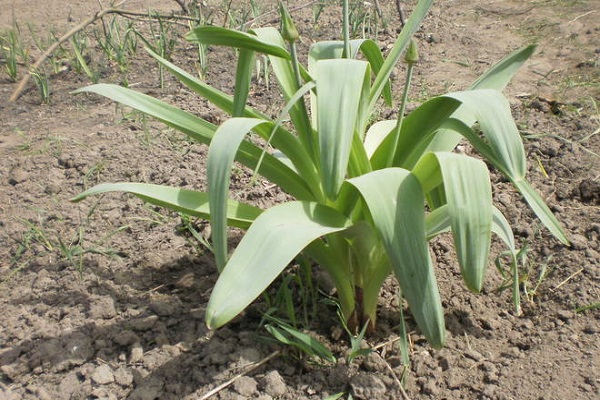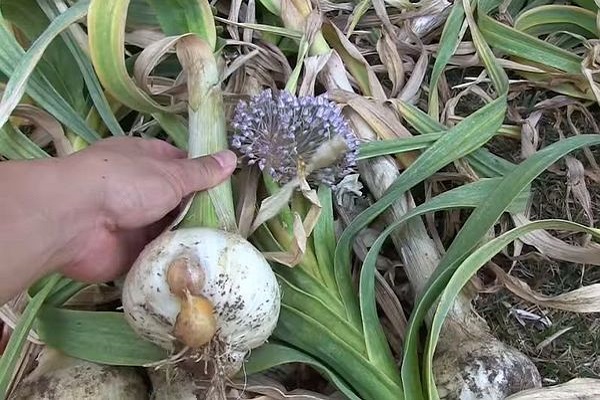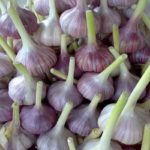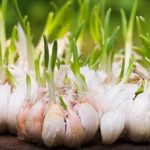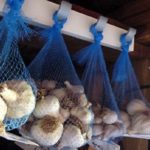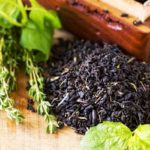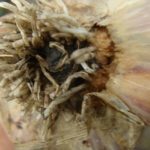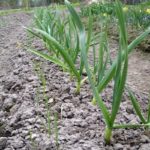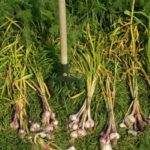Rocambole garlic is popular in Europe. It is grown in Siberia and Crimea. In the central zone, the plant is rarely found in gardens. And in vain! One head can really satisfy a family of 4 people.
Some gardeners call the representative of the lily family Rocambole. In appearance, the upper part resembles a leek: flat, leathery leaves extend from the thick “leg”.
The heads are impressive in size. It tastes like onion, similar to garlic. The characteristic sharpness and bitterness are softened. Added spice.
The plant is decorative: during flowering it decorates the garden with lilac heads. Vegetable beds turn into flower beds.
Giant garlic
Because of the large heads, the plant is called elephant garlic. He came to Russia in the 19th century. But it did not receive distribution. Spicy onions were popular in those days.
The plant is native to Asia. Rocambole is sometimes mistakenly called Egyptian garlic. It is actively grown in the southern regions. The plant is unpretentious: it produces a decent harvest at moderately warm summer temperatures.
It is quite easy to grow a representative of the lily family from seeds or cloves. If you follow the rules of agricultural technology, it is possible to provide your family with vegetable products for a year.
Onion-garlic Rocambole delights gardeners with its non-standard taste. The bitterness is insignificant, the spiciness is added. In the Mediterranean, the heads are baked and served as a hot appetizer.
Description
The large vegetable combines the features of two representatives of the lily family. The upper part has a rigid “leg”. A rosette with leathery leaves 1–2 cm wide extends from it. The color of the ground part is bright green with a matte emerald tint.
The Rocambole garlic bulb has a diameter of 6–10 cm. It is covered with hard scales. The number of teeth is from 2 to 6 pieces. The weight of the head with minimal care is 100 g. Under favorable climatic conditions, it is possible to obtain a bulb of 450 g.
Airy babies ripen underground (like some varieties of gladioli). They are used when planting. The arrows are crowned with purple flowers. The plant is very decorative when flowering. The seeds do not ripen.
According to the description, the taste of Rocambole garlic resembles both plants at the same time. There is no bitterness or characteristic odor. Added spicy spice.
The vegetable does not store well. Delicious marinated or salted.Gardeners came up with the idea of using it as a dry seasoning for soups and main courses.
Summer residents talk about the benefits and harms of onion-garlic Rocambole:
- the plant contains micro- and macroelements (heals the body);
- phytoncides fight bacteria and viruses;
- ascorbic acid fights colds;
- carotene strengthens muscles (in combination with fats);
- B vitamins strengthen the nervous system;
- bitterness stimulates appetite;
- The immune system is strengthened with PP vitamins.
People with gastrointestinal diseases, high acidity of gastric juice, chronic liver and gallbladder diseases should eat onions with caution: preference should be given to baked foods. Pregnant women and young children are not recommended to eat it.
Gardeners grow large garlic Rocambole as a useful plant. It is productive, tasty, and decorates the beds.
Types of garlic Rocambole
Biologists say: the plant is a variety, not a hybrid. There are several types of very large Rocambole garlic:
- Janissary. Newly bred giant garlic Rocambole. It has a balanced, spicy taste. Heads 6–7 cm.
- White elephant. The largest cultivated garlic is Rocambole. Value: bottom resistance to rotting, winter hardiness. Characteristic feature: absence of flower arrows. The teeth are beige in color (there are 7 of them in the bulb). Medium spicy.
- Pearl. The most productive and spicy. With proper agricultural technology, they get 4 kg/m². Disadvantage: active shooting.
They are unpretentious in culture. They differ in the color of the covering scales, ripening period, and taste. Among others varieties of onions, the types of Rocambole garlic are not very well known. The most popular Janissary. Gardeners prefer the common name: elephant garlic.
Propagation of garlic Rocambole
The cultivation of the plant is determined by the two-year development cycle of Rocambole, care and cultivation. Aerial bulbs (babies) ripen underground, around the bottom. Usually there are 15–20 of them. Bulbs are collected when harvesting from two-year-old plants.
The advantage of propagating Rocambole garlic: in the first year, the children grow into a bulb comparable to a chicken egg. Gardeners use it as food: the taste is no different from the taste of the mother plant.
To obtain seed material, it is recommended to replant the one-toothed plant. It will grow into a full-fledged bulb. Large and healthy ones are selected for reproduction. They are dried in a shaded place for 3–5 days. Then the roots and tops are cut off, wrapped in paper and stored in the refrigerator until planting.
The head is divided into teeth, and the upper covering scales are carefully removed. The affected parts are discarded, healthy parts are planted in a prepared bed.
Soil cultivation and preparation for planting
Rocambole is a giant garlic that requires a prepared bed for growth and development. The planting area is open and illuminated. The soil should be cultivated in advance:
- Check acidity. If it is elevated, you should add dolomite flour, slaked lime, stove ash (1 liter per 1 m²).
- Add organic matter (mature compost, rotted manure) 1 bucket per 2 m². Dig on the bayonet of a shovel.
- Rocambole onions planted in a garlic bed love loose, breathable soil. On heavy soils (clay, loam), sanding is required (a bucket of 3–4 m²), on light soils (sand, peat), claying is required.
- After a week, add a mineral complex for bulbous crops (according to the manufacturer’s instructions).
- Select planting material. Discard damaged or diseased teeth.
- Remove the top layer of husk from the babies (it prevents germination).
- To prevent bolting, the material is heated in water at 40–45 ⁰C for 2 hours (carry out only during spring sowing).
- Garlic is planted 5–7 days after preparing the soil.
- Mark the rows. Distance: 15–20 cm. Keep 20 cm between holes. When sowing by children, the pattern changes: 5 x 10 cm.
General rule: it is recommended to embed planting material into the soil to a depth of 2–3 tine heights.
Planting Rocambole in spring
Growing Elephant Garlic from Seeds in the spring it allows you to get a harvest that is better stored. Before planting, it is recommended to warm the cloves in a pale pink solution of potassium permanganate. This will disinfect the planting material and speed up germination.
When to plant onion garlic Rocambole?
This is a cold-resistant crop. Planting should be done when the soil warms up to 5–6 degrees Celsius. The plant - a mixture of onions and garlic - is not afraid of returning cold weather.
According to the ripening period, marketable bulbs will reach the table in August-September. Elephant garlic seeds are selected from them. They can be planted before winter.
Planting Rocambole in autumn
Summer-grown children or tines serve as planting material. They are selected and reviewed. Those that are sick or have been chewed by mice or insects are discarded. Dry it. Elephant garlic Rocambole dries out and wrinkles quickly. It should be ventilated in the shade.
Onion garlic should be planted 2-3 weeks before stable sub-zero temperatures: the cloves must take root. This will help them survive the winter.
Until the onset of cold weather, the bed remains uncovered. Then you need to mulch the plantings with a layer of 5–10 cm. Rotted sawdust and neutral peat are suitable. In the spring, after the snow melts, the mulch is carefully raked to the side.
The vegetable garden serves as a nursery for Rocambole: the seeds ripen in the summer and are planted in the fall. Advantages of winter sowing: saving time in spring, obtaining early products. Disadvantage: the harvested vegetable does not store well.
Predecessors
Rocambole grows like garlic. This plant is demanding on soil fertility. It actively takes nutrients from it.
Cultivated garlic feels good after cabbage, beans, turnips, and radishes. The gardener risks being left without a harvest when planting Rocambole after potatoes, onions and any lilies.
After vegetables and any herbs, before planting large Rocambole garlic, you should add mineral and organic fertilizers to the soil.
The onion-garlic plant produces large heads when planted before winter after salads and arugula.
Care
To obtain huge fruits of Rocambole garlic, you have to try:
- it is necessary to carefully weed the ridges;
- the soil must be kept moist;
- in case of prolonged rains, it is recommended to arrange water drainage;
- the soil should be loosened (especially after rains);
- planting onion-garlic Rocambole tolerates heat well;
- Flower stalks should be broken off in bolting varieties;
- Growing Japanese garlic is impossible on poor soil: fertilizing is needed (one organic fertilizer is done after germination, a second mineral fertilizer after 10 days, a third mineral fertilizer during flowering).
Fertilizing is done if the beds were not filled with fertilizers during planting.
Collection
Rocambole garlic should be dug up when the lower leaves turn yellow and begin to dry out. Carefully remove the bulbs from the ground using a pitchfork. Cleaning is carried out in dry sunny weather. The dug up vegetable is kept in the sun for 2 hours. Ultraviolet light disinfects the heads.
Then the harvest is laid out to dry for a week under a canopy in the shade. The roots of the finished Rocambole are cut off, without damaging the bottom, and the tops, leaving 15 cm.
Garlic planted in spring is suitable for winter storage. After collection, the heads are placed in plastic boxes. Keep in a cool dry place.

